#Newsletter Software
Explore tagged Tumblr posts
Text
Revolutionize Your Email Marketing Strategy with MailerLite

In the digital age, effective email marketing is essential for businesses seeking to connect with their audience and drive conversions. However, managing email campaigns can be time-consuming and complex without the right tools. Enter MailerLite, a comprehensive email automation platform designed to simplify your email marketing efforts and maximize your ROI. Let's explore how MailerLite can revolutionize your email marketing strategy and propel your business to new heights of success.
Seamless Email Automation Platform for Effortless Campaigns
With MailerLite's intuitive email automation platform, you can streamline your email marketing workflows and deliver targeted messages with ease. Whether you're nurturing leads, welcoming new subscribers, or re-engaging inactive contacts, MailerLite's automation features make it easy to set up and manage automated campaigns. By automating repetitive tasks, you can save time and resources while delivering personalized content that resonates with your audience.
Engaging Email Campaigns with Stunning Templates
Crafting visually appealing email campaigns has never been easier with MailerLite's collection of customizable templates. Whether you're promoting a new product, sharing company updates, or sending out newsletters, MailerLite provides a range of professionally designed templates to suit your needs. With drag-and-drop editing tools and responsive designs, you can create eye-catching emails that capture your audience's attention and drive engagement.
Personalized Email Marketing Automation for Targeted Communication
Personalization is key to effective email marketing, and MailerLite's email marketing automation features enable you to deliver personalized messages that resonate with your subscribers. By segmenting your audience based on their interests, preferences, and behavior, you can send targeted emails that deliver the right message to the right person at the right time. Whether you're sending promotional offers, event invitations, or educational content, MailerLite's automation capabilities ensure that every email feels tailored to the recipient.
Advanced Features for Optimal Performance and Results
MailerLite offers a range of advanced features and tools to help you optimize your email marketing strategy and achieve your business goals. From A/B testing and analytics to integrations with other marketing platforms, MailerLite provides everything you need to monitor performance, refine your approach, and drive results. Whether you're a small business owner, a marketing professional, or an entrepreneur, MailerLite equips you with the resources you need to succeed in the competitive world of email marketing.
Conclusion: Elevate Your Email Marketing Efforts with MailerLite
In conclusion, MailerLite is a powerful email automation platform that empowers businesses to streamline their email marketing efforts and drive results. With its intuitive interface, customizable templates, and advanced automation features, MailerLite makes it easy to create engaging email campaigns that resonate with your audience. Whether you're a beginner or an experienced marketer, MailerLite provides the tools and support you need to succeed in the fast-paced world of digital marketing.
Email Automation Platform | Email Campaigns | Email Marketing Automation | Email Marketing Strategy | Marketing Tools | Marketing Technology | Newsletter Software
#Digital Marketing Solutions#Email Automation Platform#Email Campaigns#Email Marketing Automation#Email Marketing Strategy#Marketing Technology#Marketing Tools#Newsletter Software
1 note
·
View note
Text
Why Email Marketing Is So Importnat? Fun Facts and Insider Tips 🔥
🌟 Hey #MarketingMinds! Let's dive into the incredible world of #EmailMarketing - where the magic happens! 💌✨
1️⃣ Did you know? Email marketing has an ROI of 4400%! 💸💥 Yep, you read it right. That's like turning a dime into a treasure chest! ✉️
2️⃣ It's not just about sending emails, it's about building relationships. 🤝📧 Email is your secret weapon to connect, engage, and create a community around your brand. 💖
3️⃣ Personalization is the name of the game. 🎯 Tailor your emails like a bespoke suit – people want to feel special, not like another fish in the sea. 🐠📩
4️⃣ Insider Tip: Timing is everything! 🕒✉️ Studies show that Tuesday and Thursday mornings are prime time for opening emails. Hit that inbox when it's hot! ☕️🔥
5️⃣ Subject lines matter... A LOT! 🚀✉️ Get creative, be intriguing, and lure them in with the promise of something amazing inside. It's like a mini movie trailer for your content! 🎥🌟
6️⃣ The power of segmentation! 🔍📬 Break down your audience into smaller groups based on behavior, preferences, or demographics. Serve them what they want, and they'll love you for it! 💕🎯
7️⃣ Did you know emojis in the subject line can boost open rates by 56%? 🤯📧 Spice it up! 🌶️✉️ Don't be shy with those cute little symbols. They speak volumes! 🚀💬
8️⃣ Automation is your BFF. 🤖📧 Set up those drip campaigns and watch the engagement soar. It's like having a 24/7 marketing superhero working for you! 🦸♂️💼
9️⃣ A/B testing is the secret sauce! 🧪✉️ Experiment with different elements – subject lines, images, CTA buttons. Find the winning combo that makes your audience do the happy dance! 🎉
🔟 Boost your email game with our ultimate Email Marketing Guide! 📚✉️ Dive deep into the art and science of email marketing. Your inbox will thank you! 💌🚀
#emailmarketing #emailmarketingtips #emailmarketingbusiness #emailmarketingstrategy #emailmarketingagency #emailmarketingcampaign #emailmarketingautomation #emailmarketingtraining #emailmarketingcourse #affiliatemarketing #digitalmarketing #internetmarketing #makemoneyonline #earnmoneyonline #workfromhome #homebusiness #onlinebusiness #onlinemarketing #emaillist #emaillistbuilding #mailinglist #mailinglistbuilding #emailmarketer #salesfunnel #marketingtips
#work from home#affiliate marketing#make money online#home business#make money with affiliate marketing#online marketing#digital marketing#online business#blogger#marketing#email security#email newsletter#email marketing software#email marketing#email list#emailmarketing
18 notes
·
View notes
Text
Me learning Microsoft Publisher, apparently:
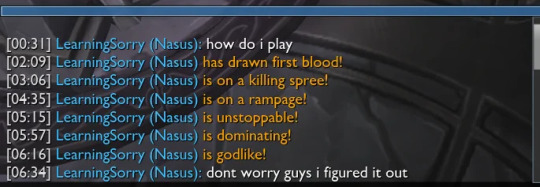
#my posts#Me: hey guys im learning a new software for this newsletter forgive me if it looks off#everyone apparently: WOW this looks amazing and so much better#consider this software learned I guess?
7 notes
·
View notes
Text

interSystems announces its recognition in the 2025 Best in KLAS awards for Asia/Oceania. Explore healthcare news magazine & healthcare industry newsletters.
#InterSystems#2025 Best in KLAS#KLAS awards Asia#healthcare IT awards#healthcare IT Asia#digital health Asia#healthcare software recognition#health tech awards#medical IT news#Asia Oceania healthcare#healthcare technology trends#healthcare news updates#healthcare industry newsletters
1 note
·
View note
Text
Enriqueciendo la Experiencia Conversacional con Chat GPT5: Conociendo el Entorno del Usuario
Descubre el futuro de la inteligencia artificial con Chat GPT5. Habilidades conversacionales avanzadas, sin sesgos. Conoce tu entorno, filtra desinformación. Suscríbete para estar al tanto. ¡Innovación, tecnología y más!
La anticipación en la comunidad tecnológica está en aumento, ya que se espera que la quinta versión de Chat GPT supere las expectativas establecidas por su predecesor, Chat GPT4. A medida que la inteligencia artificial evoluciona, se centra en afinar las habilidades conversacionales con un enfoque particular en comprender el contexto del usuario, marcando un hito significativo en la interacción…

View On WordPress
#Apple#Autocad#Automatización#Chat GPT5#Contenidos libres de sesgos#Desarrollo de software#Desinformación#diseño web#Emprendimiento#Entorno del usuario#Estrategias empresariales#Filtros de seguridad#Habilidades conversacionales#IA en el mundo empresarial#Innovación Tecnológica#inteligencia artificial#Interacción hombre-máquina#marketing digital#Newsletter#Novedades tecnológicas#Photoshop#Programación#Programador freelancer#programador software#Redes de telecomunicaciones#SEO#Sitios web#Tecnología emergente#Transformación Digital#WordPress
1 note
·
View note
Text
A tech newsletter that has a few other options as well. Currently I'm subscribed to TLDR and their Developer newsletter as well. It's an easy no nonsense email with relevant industry news and links to new tools and resources you may want to learn about.
Here is what an email looks like from them.
This is not an affiliate link.
0 notes
Text
Pick a Card: Career Guidance




Top Left to Right--> Pile 1, Pile 2
Bottom Left to Right--> Pile 3. Pile 4
If You Liked This Reading Sign up to TheObsidianPages777 Newsletter
+Free E-Guides on New Moon Manifestation and Gem Stone for Life Path
================================================================================================
Pile 1
Current Situation: The Chariot
You are determined and focused on your career goals, moving forward with purpose and direction. There's a sense of control and determination driving your actions.
Challenges: Five of Wands
You may be facing competition or conflict in your workplace. There could be differing opinions and struggles that make it hard to progress smoothly.
Advice: Strength
Rely on your inner strength and patience to navigate through challenges. Maintain self-control and approach conflicts with compassion and understanding. Your resilience will lead you to success.
Ideal Careers:
Leadership Roles: Positions such as a manager, director, or CEO, where determination and leadership are crucial.
Entrepreneur: Running your own business where you can harness your drive and overcome competition.
Project Management: Roles that require strong organizational skills and the ability to navigate conflicts and challenges.
Military or Law Enforcement: Careers that require discipline, determination, and the ability to handle conflict and stress.
Athletics or Coaching: Where physical and mental strength, as well as resilience, are important.
================================================================================================
Pile 2
Current Situation: The Hierophant
Your career path is currently influenced by traditional structures and conventional methods. You may be working within an established system or organization.
Challenges: Seven of Cups
There may be confusion or too many options available, making it difficult to choose the right path. Avoid getting lost in illusions or wishful thinking.
Advice: The Hermit
Take time for introspection and seek inner guidance. Reflect on your true goals and values before making decisions. Solitude and self-reflection will provide clarity.
Ideal Careers:
Education: Teacher, professor, or academic advisor, where traditional knowledge and guidance are valued.
Religious or Spiritual Leader: Priest, minister, or spiritual counselor, providing guidance within established belief systems.
Legal Profession: Lawyer, judge, or paralegal, working within the structures of the legal system.
Research and Academia: Careers that involve deep study and reflection, such as a researcher or academic.
Counseling or Therapy: Roles that require introspection and helping others find clarity, such as a therapist or counselor.
================================================================================================
Pile 3
Current Situation: Ace of Pentacles
A new opportunity or beginning in your career is emerging. This could be a job offer, a new project, or a chance to start something new with strong potential for growth.
Challenges: The Devil
Be wary of falling into negative patterns or becoming too attached to material success. Avoid temptations that could lead to unethical behavior or burnout.
Advice: Page of Swords
Approach new opportunities with curiosity and a willingness to learn. Stay vigilant and gather information before making decisions. Be clear and honest in your communication.
Ideal Careers:
Finance: Banker, financial advisor, or investment analyst, where new opportunities for growth are abundant.
Real Estate: Real estate agent or property manager, involving new ventures and potential for substantial growth.
Technology: IT specialist, software developer, or tech entrepreneur, where continuous learning and vigilance are key.
Journalism: Reporter, editor, or content creator, focusing on gathering and disseminating information.
Consulting: Business consultant or analyst, providing strategic advice and insights to businesses.
================================================================================================
Pile 4
Current Situation: Three of Cups
Collaboration and teamwork are currently significant in your career. You may be part of a supportive group or network, enjoying camaraderie and shared goals.
Challenges: Four of Pentacles
There could be a tendency to hold on too tightly to security or resources, leading to stagnation. Fear of change or loss may be preventing growth.
Advice: The Star
Stay hopeful and keep a positive outlook. Trust in the universe and your vision for the future. This is a time for healing, inspiration, and aligning with your true purpose.
Ideal Careers:
Event Planning: Event coordinator or wedding planner, where collaboration and teamwork are essential.
Human Resources: HR manager or recruiter, fostering a positive and collaborative workplace environment.
Creative Arts: Artist, musician, or performer, involving collaboration and shared creative goals.
Non-Profit or Community Work: Community organizer, social worker, or NGO worker, focusing on collective well-being and humanitarian goals.
Healthcare: Nurse, doctor, or therapist, providing care and support with a focus on healing and hope.
If You Liked This Reading Sign up to TheObsidianPages777 Newsletter
+Free E-Guides on New Moon Manifestation and Gem Stone for Life Path
#pick a card#pick a pile#pick a photo#pick one#tarot community#tarot reading#tarot#tarot cards#tarotblr#pick a picture#pick a reading
317 notes
·
View notes
Text


i found the program the tto team used to make renders for newsletters and stuff. heres stuff i made to practice the software.
24 notes
·
View notes
Text
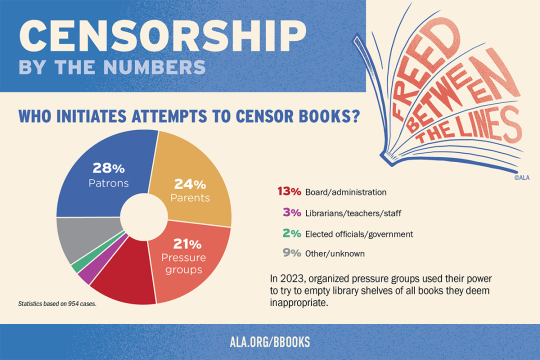


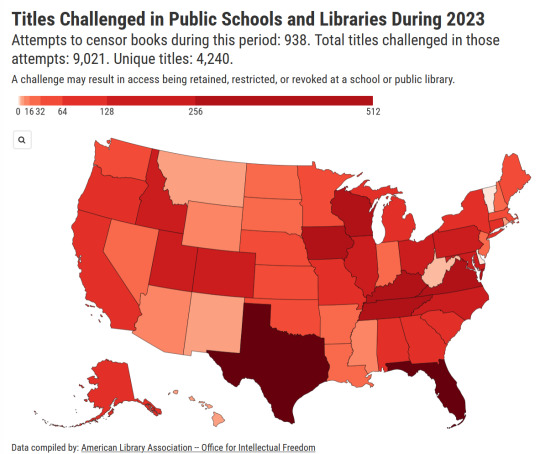
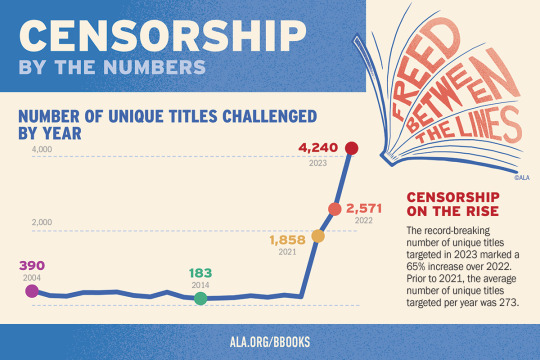
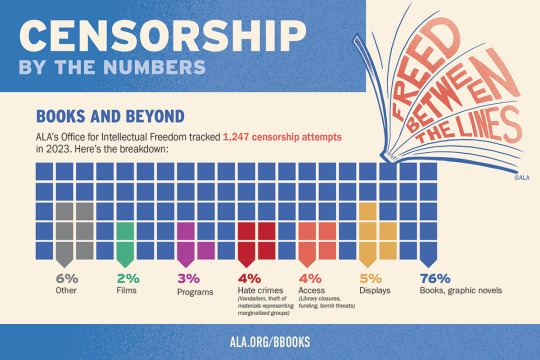
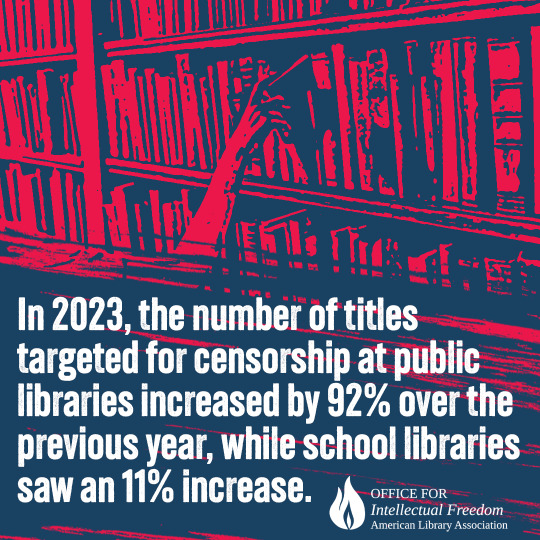

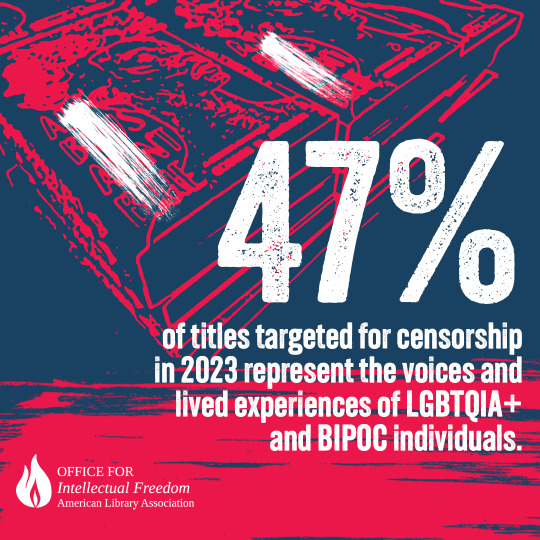
The ALA's State of America's Libraries Report for 2024 is out now.
2023 had the highest number of challenged book titles ever documented by the ALA.
You can view the full PDF of the report here. Book ban/challenge data broken down by state can be found here.
If you can, try to keep an eye on your local libraries, especially school and public libraries. If book/program challenges or attacks on library staff are happening in your area, make your voice heard -- show up at school board meetings, county commissioner meetings, town halls, etc. Counterprotest. Write messages of support on social media or in your local papers. Show support for staff in-person. Tell others about the value of libraries.
Get a library card if you haven't yet -- if you're not a regular user, chances are you might not know what all your library offers. I'm talking video games, makerspaces (3D printers, digital art software, recording equipment, VR, etc.), streaming services, meeting spaces, free demonstrations and programs (often with any necessary materials provided at no cost!), mobile WiFi hotspots, Library of Things collections, database subscriptions, genealogy resources, and so on. A lot of electronic resources like ebooks, databases, and streaming services you can access off-site as long as you have a (again: free!!!) library card. There may even be services like homebound delivery for people who can't physically come to the library.
Also try to stay up to date on pending legislation in your state -- right now there's a ton of proposed legislation that will harm libraries, but there are also bills that aim to protect libraries, librarians, teachers, and intellectual freedom. It's just as important to let your representatives know that you support pro-library/anti-censorship legislation as it is to let them know that you oppose anti-library/pro-censorship legislation.
Unfortunately, someone being a library user or seeing value in the work that libraries do does not guarantee that they will support libraries at the ballot. One of the biggest predictors for whether libraries stay funded is not the quantity or quality of the services, programs, and materials it offers, but voter support. Make sure your representatives and local politicians know your stance and that their actions toward libraries will affect your vote.
Here are some resources for staying updated:
If you're interested in library advocacy and staying up to date with the challenges libraries are facing in the U.S., check out EveryLibrary, which focuses on building voter support for libraries.
Book Riot has regular articles on censorship attempts taking place throughout the nation, which can be found here, as well as a Literary Activism Newsletter.
The American Library Association's Office for Intellectual Freedom focuses on the intellectual freedom component of the Library Bill of Rights, tracks censorship attempts throughout each year, and provides training, support, and education about intellectual freedom to library staff and the public.
The Electronic Frontier Foundation focuses on intellectual freedom in the digital world, including fighting online censorship and illegal surveillance.
I know this post is long, but please spread the word. Libraries need your support now more than ever.
163 notes
·
View notes
Text
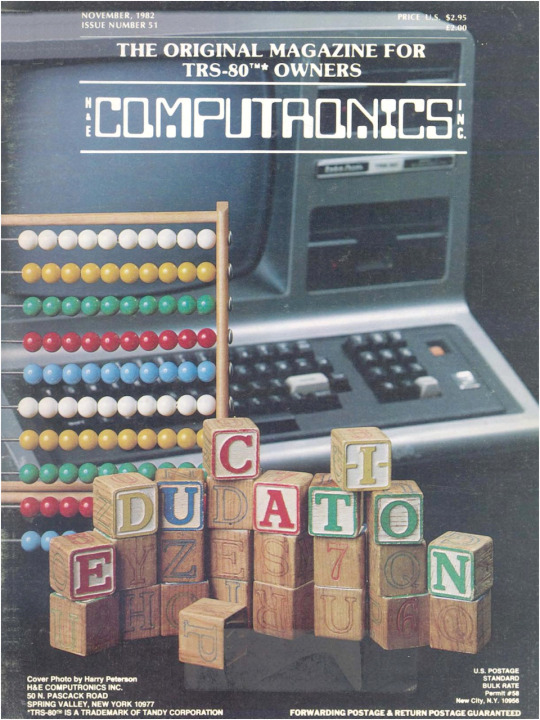
Computronics TRS-80 Magazine Cover
Issue Number 51, November 1982
H&E Computronics, Inc. was renowned for its business software and TRS-80 monthly magazine. The magazine, initially called TRS-80 Monthly Newsletter, grew to become H&E Computronics Monthly News Magazine, a 70-page publication.
Created by publisher Howard Gosman, the magazine featured articles, columns, reviews, and third-party advertising. Notable columns included "The Crystal Ball," which shared news and rumors about TRS-80 developments, and Hubert S. Howe, Jr.'s columns on assembly language programming.
Although H&E Computronics continued selling business software until the late 1980s, the magazine ceased publication in September 1983, merging into BASIC Computing magazine.
#80s magazines#80s computers#trs 80#vintage computers#1982#1980s#80s#eighties#early 1980s#vintage computer magazines#magazine covers#retro computers#retro tech#vintage tech#radio shack#computronics#computer magazine#tech magazines
30 notes
·
View notes
Text
Email Marketing Hacks To Pump Up Your Open Rate 🔥
Hey there 👋 Ready for a journey into the world of Cold Email sorcery? 🧙♂️✉️ Get ready for mind-blowing insights that'll skyrocket your campaigns. 🚀
1️⃣ **The Art of Subject Lines:** Craft 'em like poetry! 📜✨ Did you know, 47% of email recipients open emails based on the subject line alone? 🤯 Unleash your creativity; make 'em curious, make 'em click! 🧐🔥
2️⃣ **Timing is Everything:** It's not just about what you say but when you say it. 🕒⚡ Did you know, emails sent on Tuesdays have the highest open rates? 📅 Experiment with timing; catch your audience when they're most receptive! 🎯
3️⃣ **Personalization Power:** 91% of consumers are more likely to engage with personalized content. 🤝 Dive into data, personalize like a pro, and watch your response rates soar! 🚀📈
4️⃣ **A/B Testing Alchemy:** Ever tried mixing potions to see which one's more potent? 🧪✨ A/B testing is your secret weapon! 🔬 Test different elements - from subject lines to CTAs - and optimize for maximum impact! 📊💡
5️⃣ **The Sneaky Preview Text Trick:** Sneak peek into email magic! ��✉️ Crafting a killer preview text boosts open rates by 5-10%. 🚪💥 Don't neglect this tiny yet powerful detail; it's your golden ticket to engagement! 🌈🎟️
6️⃣ **Segmentation Spells:** One size fits none! 🚫👥 Did you know, segmented campaigns get 14.31% higher open rates? 🔍📊 Segment your audience, send tailored messages, and watch your conversion wizardry unfold! 🪄✨
7️⃣ **The Power of Storytelling:** Who doesn't love a good tale? 📖✨ Emails with stories resonate better! 🌟 Create a narrative, connect emotionally, and turn your audience into raving fans! 🚀👏
8️⃣ **Responsive Design Enchantment:** Mobile users rule! 📱💪 Over 70% of emails are opened on mobile devices. 🌐💼 Craft responsive designs for a seamless experience; don't lose your mobile audience! 🌈🚀
9️⃣ **Unsubscribe Optics:** Turn lemons into lemonade! 🍋🥤 Did you know, a clear unsubscribe option boosts trust? 🤝 Make it easy, and use the data wisely. Learn from those who leave, and refine your approach! 🔄🌐
🚀 Like, share, and comment with your favorite email sorcery tip! Let's build a community of email wizards! 🌐💬
This is just the tip of the iceberg. Want the ultimate guide to conquer email marketing? 📬💡
Dive into my Email Campaigns Guide for a deep dive into the art of enchanting inboxes! 🚀📩
#DigitalMarketingGurus #coldemailmarketing #emailmarketing #emailmarketingcampaigns #emailcapmaigns #emailmarketingstrategy #emailcopy #emailcopywriter #emailcopywriting #emaillist #listbuilding #emailistbuilding #mailinglist #openrate #clickrate #roi #boostyouropenrate #emaillistsegmentation #emailsegmentation #emailpersonalization #affiliatemarketing #emailmarketer #emailmarketingguide #emailmarketingtips #emailmarketingexpert #emailmarketingagency #seo #internetmarketing #onlinemarketing #digitalmarketing #contentmarketing #leadgeneration #leadmagnet #emailmarketingtools #emailmarketingsoftware #emailautomation #autoresponder #makemoneyonline #workfromhome #homebusiness #onlinebusiness #earnmoneyonline
#work from home#affiliate marketing#make money online#home business#make money with affiliate marketing#online marketing#online business#digital marketing#blogger#marketing#email security#email#emailmarketing#emails i can't send#email list#email marketing#email marketing software#email newsletter#mailing list#mailing services
1 note
·
View note
Text
How much should it cost to be a writer?
It depends what route you’re taking. If you are planning to go for traditional publishing, which looks like you finishing a manuscript and then querying agents who will then take your book to publishers, you should be paying for basically nothing. One exception would be if you decide to hire an editor to get a pass over your manuscript and/or query package before sending it off, but this is not required.
If you are in the process of trying to get your manuscript traditionally published, you may be approached by a “publisher” offering to publish your manuscript for a fee. THIS IS A SCAM! An author should never be paying for “publishing services.” Anyone asking you to pay for your own printing, marketing, etc. costs is taking advantage of you. These are called vanity publishers and they will not turn you a profit, help you attract readers, or provide you the prestige of being published.
Always check on Writer Beware - search for the name of the person or company. You can also just google that name along with the word “scam” or “reviews.” In general, don’t let yourself be blinded by dreams, or let yourself be convinced that something is a good idea because you really want it to be true. Never, ever, ever pay a publisher.
If you are going the self-publishing route, you will be paying for certain things, but none of those should be payment to be published. You are the publisher. Uploading your manuscript to Amazon or other marketplaces is free. However, you will be paying for things that a publisher typically pays for. This could include:
-Cover art - you could do this yourself, though this isn't recommended. A good cover is key to a book's success, so budget to purchase a pre-made book cover, or hire a professional cover artist.
To find pre-made book covers, you can just Google "premade book covers," or check one of these sites: BookCoverZone RockingBookCovers Beetiful
And here's a list of places to buy both custom and pre-made cover designs that's a good start. You can also check Reedsy and Etsy for people listing cover design services. If there is a self-pubbed author whose covers you love, try asking them what artist they use.
-Formatting - you could do this yourself using a formatting program like Atticus, or you could hire someone who does professional e-book formatting.
Here's an article on the turbo-DIY route. Here's a list of formatting programs you can use. To hire someone, you can simply search for book formatting services or look at places where people list such services for hire, like Reedsy, Fiverr, or certain Reddit boards.
-Ad campaigns - you may want to pay for ad campaigns on platforms like Meta or Amazon. More niche, author-specific platforms like BookBub, Book Funnel, or Book Sirens also come with certain costs.
-Author services - you may wish to hire an expert in things like marketing, blurb copy, social media metrics, newsletter management, etc. You can find information on that here.
Be aware that scam publishers might try to pitch themselves as "author services" - you should be paying someone to help you with specific aspects of your self publishing work, NOT paying to be published.
-Software and platforms - whether it's a subscription to Duotrope, a paid Scribophile account, access to pro Canva features, etc. you may decide to pay for tools that you will use to do your work well.
-Expert advice - some people offer courses, books, or other resources on how to do specific things like write a compelling blurb or run an effective ad campaign. You may notice that a lot of the links I shared here will include upsells from people doing exactly this!
Be very cautious about this, as most of these people claim that they make tons of money on their self published books, but really, they make their money selling this stuff to people like you. Always check out a person’s free resources first, and wait to invest in this sort of thing until you have a specific question you need answered or are trying to do a very particular thing that you need granular guidance on.
One thing you should NOT pay for is a review, feature, or interview. Self-published authors will be approached by a lot of scammers who claim that, for a nominal fee, they will share information about your book to their huge audiences. These are completely useless and a waste of money. Never spend money on this.
Always keep track of what you are spending on all of this. You may be able to deduct it from taxes you pay on your income from writing, and you will want to really understand what your profit margins look like.
68 notes
·
View notes
Text
Arvind Narayanan, a computer science professor at Princeton University, is best known for calling out the hype surrounding artificial intelligence in his Substack, AI Snake Oil, written with PhD candidate Sayash Kapoor. The two authors recently released a book based on their popular newsletter about AI’s shortcomings.
But don’t get it twisted—they aren’t against using new technology. “It's easy to misconstrue our message as saying that all of AI is harmful or dubious,” Narayanan says. He makes clear, during a conversation with WIRED, that his rebuke is not aimed at the software per say, but rather the culprits who continue to spread misleading claims about artificial intelligence.
In AI Snake Oil, those guilty of perpetuating the current hype cycle are divided into three core groups: the companies selling AI, researchers studying AI, and journalists covering AI.
Hype Super-Spreaders
Companies claiming to predict the future using algorithms are positioned as potentially the most fraudulent. “When predictive AI systems are deployed, the first people they harm are often minorities and those already in poverty,” Narayanan and Kapoor write in the book. For example, an algorithm previously used in the Netherlands by a local government to predict who may commit welfare fraud wrongly targeted women and immigrants who didn’t speak Dutch.
The authors turn a skeptical eye as well toward companies mainly focused on existential risks, like artificial general intelligence, the concept of a super-powerful algorithm better than humans at performing labor. Though, they don’t scoff at the idea of AGI. “When I decided to become a computer scientist, the ability to contribute to AGI was a big part of my own identity and motivation,” says Narayanan. The misalignment comes from companies prioritizing long-term risk factors above the impact AI tools have on people right now, a common refrain I’ve heard from researchers.
Much of the hype and misunderstandings can also be blamed on shoddy, non-reproducible research, the authors claim. “We found that in a large number of fields, the issue of data leakage leads to overoptimistic claims about how well AI works,” says Kapoor. Data leakage is essentially when AI is tested using part of the model’s training data—similar to handing out the answers to students before conducting an exam.
While academics are portrayed in AI Snake Oil as making “textbook errors,” journalists are more maliciously motivated and knowingly in the wrong, according to the Princeton researchers: “Many articles are just reworded press releases laundered as news.” Reporters who sidestep honest reporting in favor of maintaining their relationships with big tech companies and protecting their access to the companies’ executives are noted as especially toxic.
I think the criticisms about access journalism are fair. In retrospect, I could have asked tougher or more savvy questions during some interviews with the stakeholders at the most important companies in AI. But the authors might be oversimplifying the matter here. The fact that big AI companies let me in the door doesn’t prevent me from writing skeptical articles about their technology, or working on investigative pieces I know will piss them off. (Yes, even if they make business deals, like OpenAI did, with the parent company of WIRED.)
And sensational news stories can be misleading about AI’s true capabilities. Narayanan and Kapoor highlight New York Times columnist Kevin Roose’s 2023 chatbot transcript interacting with Microsoft's tool headlined “Bing’s A.I. Chat: ‘I Want to Be Alive. 😈’” as an example of journalists sowing public confusion about sentient algorithms. “Roose was one of the people who wrote these articles,” says Kapoor. “But I think when you see headline after headline that's talking about chatbots wanting to come to life, it can be pretty impactful on the public psyche.” Kapoor mentions the ELIZA chatbot from the 1960s, whose users quickly anthropomorphized a crude AI tool, as a prime example of the lasting urge to project human qualities onto mere algorithms.
Roose declined to comment when reached via email and instead pointed me to a passage from his related column, published separately from the extensive chatbot transcript, where he explicitly states that he knows the AI is not sentient. The introduction to his chatbot transcript focuses on “its secret desire to be human” as well as “thoughts about its creators,” and the comment section is strewn with readers anxious about the chatbot’s power.
Images accompanying news articles are also called into question in AI Snake Oil. Publications often use clichéd visual metaphors, like photos of robots, at the top of a story to represent artificial intelligence features. Another common trope, an illustration of an altered human brain brimming with computer circuitry used to represent the AI’s neural network, irritates the authors. “We're not huge fans of circuit brain,” says Narayanan. “I think that metaphor is so problematic. It just comes out of this idea that intelligence is all about computation.” He suggests images of AI chips or graphics processing units should be used to visually represent reported pieces about artificial intelligence.
Education Is All You Need
The adamant admonishment of the AI hype cycle comes from the authors’ belief that large language models will actually continue to have a significant influence on society and should be discussed with more accuracy. “It's hard to overstate the impact LLMs might have in the next few decades,” says Kapoor. Even if an AI bubble does eventually pop, I agree that aspects of generative tools will be sticky enough to stay around in some form. And the proliferation of generative AI tools, which developers are currently pushing out to the public through smartphone apps and even formatting devices around it, just heightens the necessity for better education on what AI even is and its limitations.
The first step to understanding AI better is coming to terms with the vagueness of the term, which flattens an array of tools and areas of research, like natural language processing, into a tidy, marketable package. AI Snake Oil divides artificial intelligence into two subcategories: predictive AI, which uses data to assess future outcomes; and generative AI, which crafts probable answers to prompts based on past data.
It’s worth it for anyone who encounters AI tools, willingly or not, to spend at least a little time trying to better grasp key concepts, like machine learning and neural networks, to further demystify the technology and inoculate themselves from the bombardment of AI hype.
During my time covering AI for the past two years, I’ve learned that even if readers grasp a few of the limitations of generative tools, like inaccurate outputs or biased answers, many people are still hazy about all of its weaknesses. For example, in the upcoming season of AI Unlocked, my newsletter designed to help readers experiment with AI and understand it better, we included a whole lesson dedicated to examining whether ChatGPT can be trusted to dispense medical advice based on questions submitted by readers. (And whether it will keep your prompts about that weird toenail fungus private.)
A user may approach the AI’s outputs with more skepticism when they have a better understanding of where the model’s training data came from—often the depths of the internet or Reddit threads—and it may hamper their misplaced trust in the software.
Narayanan believes so strongly in the importance of quality education that he began teaching his children about the benefits and downsides of AI at a very young age. “I think it should start from elementary school,” he says. “As a parent, but also based on my understanding of the research, my approach to this is very tech-forward.”
Generative AI may now be able to write half-decent emails and help you communicate sometimes, but only well-informed humans have the power to correct breakdowns in understanding around this technology and craft a more accurate narrative moving forward.
40 notes
·
View notes
Text
GrapheneOS: Seguridad y Privacidad en tu Smartphone
En un mundo cada vez más preocupado por la seguridad y la privacidad de los datos, GrapheneOS surge como una solución confiable y de código abierto para smartphones.
En DRAFT probamos el sistema operativo en un mundo cada vez más dependiente de los dispositivos móviles, la seguridad y la privacidad son aspectos críticos a considerar. En este sentido, GrapheneOS se presenta como una solución innovadora y de código abierto que busca proteger tus datos y tu privacidad en tu smartphone. En este artículo, exploraremos las funciones de GrapheneOS, cómo instalarlo y…

View On WordPress
#Actualizaciones de seguridad#Actualizaciones mensuales#Android alternativo#Android seguro#Código abierto#Cifrado de datos#Cifrado de disco completo#Contacto con GrapheneOS#Contribución de desarrolladores#Control de permisos#Desarrollo de software#Google Pixel#GrapheneOS#Instalación de GrapheneOS#Newsletter de Draft Design Web#Privacidad de datos móviles#Privacidad digital#Privacidad en smartphones#Protección de datos móviles#Protección de datos personales#Protección de datos sensibles#Protección de la información personal#Protección de la privacidad#Repositorio en GitHub#Seguridad en dispositivos móviles#Seguridad en la comunicación#Seguridad móvil#Sistema operativo Android#Sistema operativo de código abierto#Sistema operativo seguro
0 notes
Text
Quinque gazump linkdump

On OCTOBER 23 at 7PM, I'll be in DECATUR, presenting my novel THE BEZZLE at EAGLE EYE BOOKS.

It's Saturday and any fule kno that this is the day for a linkdump, in which the links that couldn't be squeezed into the week's newsletter editions get their own showcase. Here's the previous 23 linkdumps:
https://pluralistic.net/tag/linkdump/
Start your weekend with some child's play! Ada & Zangemann is a picture book by Matthias Kirschner and Sandra Brandstätter of Free Software Foundation Europe, telling the story of a greedy inventor who ensnares a town with his proprietary, remote-brickable gadgets, and Ada, his nemesis, a young girl who reverse engineers them and lets their users seize the means of computation:
https://fsfe.org/activities/ada-zangemann/index.en.html
Ada & Zangemann is open access – you can share it, adapt it, and sell it as you see fit – and has been translated into several languages. Now, there's a cartoon version, an animated adaptation that is likewise open access, with digital assets for your remixing pleasure:
https://fsfe.org/activities/ada-zangemann//movie
Figuring out how to talk to kids about important subjects is a clarifying exercise. Back in the glory days of SNL, Eddie Murphy lampooned Fred "Mr" Rogers style of talking to kids, and it was indeed very funny:
https://snl.fandom.com/wiki/Mr._Robinson
But Mr Rogers' rhetorical style wasn't as simple as "talk slowly and use small words" – the "Fredish" dialect that Mr Rogers created was thoughtful, empathic, inclusive, and very effective:
https://memex.craphound.com/2019/07/09/the-nine-rules-of-freddish-the-positive-inclusive-empathic-language-of-mr-rogers/
Lots of writers have used the sing-songy fairytale style of children's stories to make serious political points (see, e.g. Animal Farm). My own attempt at this was my 2011 short story "The Brave Little Toaster," for MIT Tech Review's annual sf series. If the title sounds familiar, that's because I nicked it from Tom Disch's tale of the same name, as part of my series of stolen title stories:
https://locusmag.com/2012/05/cory-doctorow-a-prose-by-any-other-name/
My Toaster story is a tale of IoT gone wild, in which the nightmare of a world of "smart" devices that exert control over their owners is shown to be a nightmare. A work colleague sent me this adaptation of the story as part of an English textbook, with lots of worksheet-style exercises. I'd never seen this before, and it's very fun:
http://ourenglishclass.net/wp-content/uploads/sites/6/2024/09/bravetoaster.pdf
If you like my "Brave Little Toaster," you'll likely enjoy my novella "Unauthorized Bread," which appears in my 2019 collection Radicalized and is currently being adapted as a middle-grades graphic novel by Blue Delliquanti for Firstsecond:
https://arstechnica.com/gaming/2020/01/unauthorized-bread-a-near-future-tale-of-refugees-and-sinister-iot-appliances/
Childlike parables have their place, but just because something fits in a "just so" story, that doesn't make it true. Cryptocurrency weirdos desperately need to learn this lesson. The foundation of cryptocurrency is a fairytale about the origin of money, a mythological marketplace in which freely trading individuals who struggled to find a "confluence of needs." If you wanted to trade one third of your cow for two and a half of my chickens, how could we complete the transaction?
In the "money story" fairy tale, we spontaneously decided that we would use gold, for a bunch of nonsensical reasons that don't bear even cursory scrutiny. And so coin money sprang into existence, and we all merrily traded our gold with one another until a wicked government came and stole our gold with (cue scary voice) taaaaaaxes.
There is zero evidence for this. It's literally a fairy tale. There is a rich history of where money came from, and the answer, in short is, governments created it through taxes, and money doesn't exist without taxation:
https://locusmag.com/2022/09/cory-doctorow-moneylike/
The money story is a lie, and it's a consequential one. The belief that money arises spontaneously out of the needs of freely trading people who voluntarily accept an arbitrary token as a store of value, unit of account, and unit of exchange (coupled with a childish, reactionary aversion to taxation) inspired cryptocurrency, and with it, the scams that allowed unscrupulous huxters to steal billions from everyday people who trusted Matt Damon, Spike Lee and Larry David when they told them that cryptocurrency was a sure path to financial security:
https://pluralistic.net/2024/02/15/your-new-first-name/#that-dagger-tho
It turns out that private money, far from being a tool of liberation, is rather just a dismal tool for ripping off the unsuspecting, and that goes double for crypto, where complexity can be weaponized by swindlers:
https://pluralistic.net/2022/03/13/the-byzantine-premium/
We don't hear nearly as much about crypto these days – many of the pump-and-dump set have moved on to pitching AI stock – but there's still billions tied up in the scam, and new shitcoins are still being minted at speed. The FBI actually created a sting operation to expose the dirtiness of the crypto "ecosystem":
https://www.theverge.com/2024/10/10/24267098/fbi-coin-crypto-token-nexgenai-sec-doj-fraud-investigation
They found that the exchanges, "market makers" and other seemingly rock-ribbed institutions where suckers are enticed to buy, sell, track and price cryptos are classic Big Store cons:
http://www.amyreading.com/the-9-stages-of-the-big-con.html
When you, the unsuspecting retail investor, enter one of these mirror-palaces, you are the only audience member in a play that everyone else is in on. Those vigorous trades that see the shitcoin you're being hustled with skyrocketing in value? They're "wash trades," where insiders buy and sell the same asset to one another, without real money ever changing hands, just to create the appearance of a rapidly appreciating asset that you had best get in on before you are priced out of the market.
This scam is as old as con games themselves and, as with other scams- S&Ls, Enron, subprime – the con artists have parlayed their winnings into social respectability and are now flushing them into the political system, to punish lawmakers who threaten their ability to rip off you and your neighbors. A massive, terrifying investigative story in The New Yorker shows how crypto billionaires stole the Democratic nomination from Katie Porter, one of the most effective anti-scam lawmakers in recent history:
https://www.newyorker.com/magazine/2024/10/14/silicon-valley-the-new-lobbying-monster
Big Tech – like every corrupt cartel in history – is desperate to conjure a kleptocracy into existence, whose officials they can corrupt in order to keep the machine going until they've maximized their gains and achieved escape velocity from consequences.
No surprise, then, that tech companies have adopted the same spin tactics that sowed doubt about the tobacco-cancer link, in order to keep the US from updating its anemic privacy laws. The last time Congress gave us a new consumer privacy law was 1988, when they banned video store clerks from disclosing our VHS rental history to newspapers:
https://en.wikipedia.org/wiki/Video_Privacy_Protection_Act
By preventing confining privacy law to the VCR era, Big Tech has been able to plunder our data with impunity – aided by cops and spies who love the fact that there's a source of cheap, off-the-books, warrantless surveillance data that would be illegal for them to collect.
Writing for Tech Policy Press, the Norcal ACLU's Jake Snow connects the tobacco industry fight over "pre-emption" to the modern fight over privacy laws:
https://www.techpolicy.press/big-tech-is-trying-to-burn-privacy-to-the-ground-and-theyre-using-big-tobaccos-strategy-to-do-it/
In the 1990s, Big Tobacco went to war against state anti-smoking laws, arguing that the federal government had the right – nay, the duty – to create a "harmonized" national system of smoking laws that would preempt state laws. Strangely, politicians who love "states' rights" when it comes to banning abortion, tax-base erosion and "right to work" anti-union laws suddenly discovered federal religion when their campaign donors from the Cancer-Industrial Complex decided that states shouldn't use those rights to limit smoking.
This is exactly the tack that Big Tech has taken on privacy, arguing that any update to federal privacy law should abolish muscular state-level laws, like Illinois's best-in-class biometric privacy rules, or California's CPPA.
Like Big Tobacco, Big Tech has "funded front groups, hired an armada of lobbyists, donated millions to campaigns, and opened a firehose of lobbying money," with the goal of replacing "real privacy laws with fake industry alternatives as ineffective as non-smoking sections."
Whether it's understanding the origin of money or the Big Tobacco playbook, knowing history can protect you from all kinds of predatory behavior. But history isn't merely a sword and shield, it's also just a delight. Internet pioneer Ethan Zuckerman is road-tripping around America, and in August, he got to Columbus, IN, home to some of the country's most beautiful and important architectural treasures:
https://ethanzuckerman.com/2024/08/29/road-trip-the-company-town-and-the-corn-fields/
The buildings – clustered in within a few, walkable blocks – are the legacy of the diesel engine manufacturing titan Cummins, whose postwar president J Irwin Miller used the company's wartime profits to commission a string of gorgeous structures from starchitects like the Saarinens, IM Pei, Kevin Roche, Richard Meier, Harry Weese, C��sar Pelli, Gunnar Birkerts, and Skidmore. I had no idea about any of this, and now I want to visit Columbus!
I'm planning a book tour right now (for my next novel, Picks and Shovels, which is out in February) and there's a little wiggle-room in the midwestern part of the tour. There's a possibility that I'll end up in the vicinity, and if that happens, I'm definitely gonna find time for a little detour!

Tor Books as just published two new, free LITTLE BROTHER stories: VIGILANT, about creepy surveillance in distance education; and SPILL, about oil pipelines and indigenous landback.


If you'd like an essay-formatted version of this post to read or share, here's a link to it on pluralistic.net, my surveillance-free, ad-free, tracker-free blog:
#pluralistic#linkdump#linkdumps#iot#internet of shit#brave little toaster#drm#copyfight#fsfe#big tobacco#denialism#Ada and Zangemann#Matthias Kirschner#ethan zuckerman#columbus#ohio#road trips#architecture#fbi#sting operations#pump and dump#scams#crypto#cryptocurrency#wash trading#ethereum
49 notes
·
View notes
Text

Radio Shack Microcomputer Newsletter volume no. 1
Although this four-page house organ doesn't have a month on it, it refers to the TRS-80 Microcomputer System having been introduced on August 3, 1977 (and that some software products should be available in December). Along with answering questions from "most of the 50,000 letters we have received," it just happened to include the pinout listing for the TRS-80's expansion connector on the back page.
21 notes
·
View notes